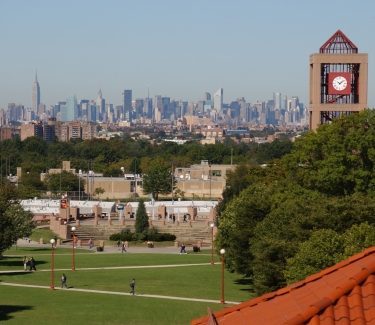Inevitably, colleges and universities will face crises and emergencies. Higher education is not immune to hurricanes, earthquakes, floods, and other natural disasters. In the aftermath of the shootings at Virginia Tech, higher education institutions also learned the importance of dealing with shootings and the need to be able to lock down campus quickly. Beyond these more extraordinary events, colleges have to make arrangements for snow days and other smaller and predictable disruptions. This week, my campus went through one of these short-term crises that got me thinking about the need for quick, decisive leadership. In today’s post, I want to share 4 steps for dealing with classes during a short-term crisis.

Due to an accident during construction, my campus abruptly lost power this week. The east side of campus went down followed about an hour later by the west half losing power as well. The power was out to most of campus for about 3 hours although the education buildings were out for an additional day (after fears that it would be out for 3-4 days due to problems that occurred when power was restored).
Unfortunately, and complicated by the power going out at two different times, there was a great deal of confusion about how to proceed. Some faculty cancelled classes while others met in the dark. The smartest moved outside as it was wonderful weather this week.
Given everything that happened this week, I’ve been thinking about how we deal with a short-term crisis. University leaders have thought out plans regarding a short-term crisis involving public safety (such as a shooting and lockdown). There are plans for weather related issues both short and long term.
I’m not sure we’ve done as good of a job of thinking about an unexpected event such as losing power for a few hours. Below are 4 steps for dealing with classes during a short-term crisis. Obviously, additional considerations should be taken regarding campus residence halls and food service, but I’ll leave such issues to others more qualified in those areas.
Steps for dealing with classes during a short-term crisis
1. Have a plan and process in place before something happens
Just as institutions have plans in place for making decisions regarding whether to close for snow days or other weather issues, there should be a plan in place to make decisions for unexpected issues. Who is in charge of making a decision regarding classes? Who has authority if that person is unavailable for whatever reason? Who needs to be consulted? Decisions need to be made quickly and everyone involved should know the process.
2. Communicate as quickly as possible
As soon as university leaders determine the existence and at least some scope of a problem, a message should be sent to the campus community. An positive outcome from the Virginia Tech tragedy is that most campuses have an emergency alert system that can be used to contact all faculty, staff, and students. The message should provide basic information (i.e. campus has suffered a power failure), a sense of the timing/scope if known, and a timeline for future messages. This last point in particular is important for letting everyone know when additional information will be forthcoming. Even if the subsequent message is “we still don’t know how long the power will be out,” you want to keep rumors down as much as possible. Moreover, communication in a crisis is best centralized. This isn’t information you want to share with deans, who share it with department chairs, who then share it with their faculty. You want as few layers involved in the process for both speed and clarity of messaging.
3. Make an immediate decision, a short-term decision, then a medium-term decision.
One of the problems that occurs when an abrupt crisis occurs is that it take a while to get information. In the case of a power outage, how widespread is it? What caused it? How long will repairs take? It takes time to get this information together. While leaders are trying to figure all this out, everyone else is literally left in the dark. This causes confusion and frustration across campus. The best course of action is to make an immediate decision. For instance, classes are cancelled until 2pm (and as noted in step 2, let everyone know when an additional decision will be made). Making an immediate decision may result in some unnecessary cancellations and the like, but decisive direction is worth this small inconvenience. After giving initial guidance, university leaders have bought themselves a couple of hours to get additional information to make a more informed decision regarding the short-term (should classes be cancelled the rest of the day or can they resume).
After making a short-term decision, you can then make medium-term decisions. What about tomorrow or the rest of the week? Maybe most of campus can get back to normal but certain buildings may still be impacted. Having bought time with the immediate and short-term decisions, leadership can get a better grasp of what is going on and make more targeted decisions going forward.
4. Over communicate
In these kinds of situations, it is always, always better to over communicate. Provide frequent updates and notices to keep everyone informed. While a small central team may be involved in the immediate and short-term decisions, other administrators such as deans and department chairs should keep their people updated as much as possible. This latter point is particularly important after the short-term crisis is over as there may be individual problems that still pop up. For example, maybe the power outage caused damage to some lab equipment or some problem to someone’s office. Central leadership will be focused on the campus wide issues so deans and chairs need to check in, identify, and help solve more local concerns.




